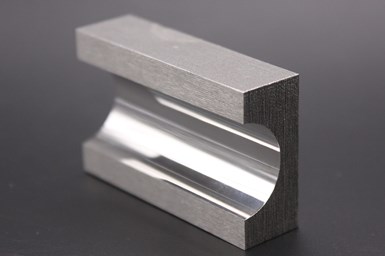GPAInnova America Partners With Xact Metal for Complete Dental 3D Printing Process
The collaboration involves the utilization of GPAInnova’s DryLyte electropolishing technology as a postprocessing solution for Xact Metal’s metal 3D printers.
The partnership between the two companies focuses on the digitization of manual labor in dental laboratories, which can lead to significant time and cost savings. Source: Xact Metal
GPAInnova America, a subsidiary of GPAInnova which specializes in metal surface finishing, is collaborating with Xact Metal, a provider of affordable metal 3D printing solutions. The partnership aims to offer a complete solution encompassing design, printing and finishing processes, leveraging the innovative technologies developed by both companies.
This additive manufacturing (AM) partnership brings together the expertise of GPAInnova , which is known for its DLyte and Murua brands in metal surface finishing, and Xact Metal, known for its commitment to making metal 3D printing accessible through cost-effective solutions.
The agreement involves the utilization of GPAInnova’s dry electropolishing technology, known as DryLyte Technology, as a postprocessing solution for Xact Metal’s metal 3D printers. This collaboration aims to streamline the metal 3D printing process, making it more accessible to organizations of all sizes.
Key Aspects of the Partnership
The collaboration between GPAInnova America and Xact Metal will provide a complete solution from design to the finished product, incorporating automation in manufacturing and finishing processes. This comprehensive approach aims to ease the introduction and integration of metal 3D printing for organizations.
The relationship between the two companies focuses on the digitization of manual labor in dental laboratories, leading to significant time and cost savings. The process is designed to be less hazardous, offering a safer and more efficient alternative. Incorporating DryLyte finishing technology with the metal 3D printing process is expected to bring substantial advantages, including a 60-80% reduction in polishing time compared to nonautomated methods, faster printing compared to traditional casting, and a notable reduction in manual labor.
“We are eager to expand our knowledge of how the manufacturing industry integrates the Xact Metal technology into its daily fabrication environment,” says Jesús Contreras, business developer at GPAInnova America. “Xact Metal has developed a unique market strategy that creates synergies similar to GPAInnova’s. Combining our expertise, we can shape the proper perspective for the AM adopters and have a final product to fulfill their needs.”
Xact Metal is pleased to begin this partnership to offer a full solution from design to finished part using GPAInnova’s patented wet and dry electropolishing. “It allows the customer to automate the finishing process, reducing the need for manual labor and saving them time,” says Juan Mario Gomez, Xact Metal CEO.
Established in Barcelona in 2013 with subsidiaries in the U.S. and China, GPAInnova specializes in metal surface finishing with DLyte and Murua brands, marine robotics with SeaBots, power electronics with Power Innotech, and medical devices with GPAMedical. It has more than 60 distributors and 900 clients worldwide. GPAInnova has been recognized by the Financial Times as one of the 1,000 fastest-growing European companies for the fourth consecutive year.
Related Content
-
VulcanForms Is Forging a New Model for Large-Scale Production (and It's More Than 3D Printing)
The MIT spinout leverages proprietary high-power laser powder bed fusion alongside machining in the context of digitized, cost-effective and “maniacally focused” production.
-
Postprocessing Steps and Costs for Metal 3D Printing
When your metal part is done 3D printing, you just pull it out of the machine and start using it, right? Not exactly.
-
Possibilities From Electroplating 3D Printed Plastic Parts
Adding layers of nickel or copper to 3D printed polymer can impart desired properties such as electrical conductivity, EMI shielding, abrasion resistance and improved strength — approaching and even exceeding 3D printed metal, according to RePliForm.















